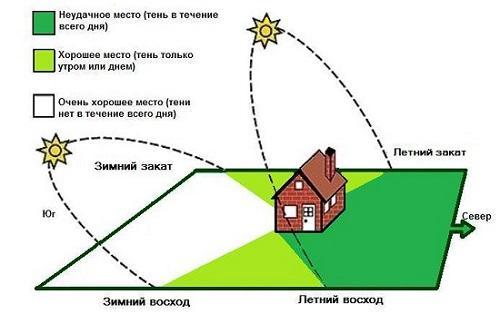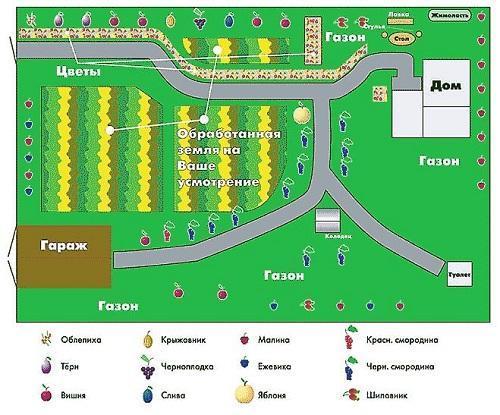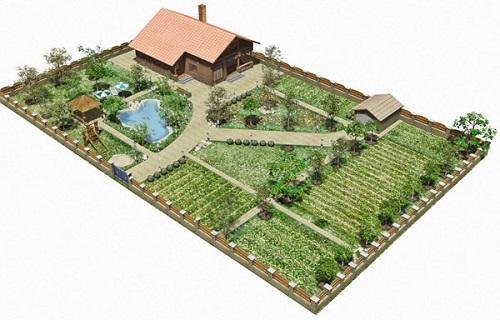We split the site and plan the planting relative to the sun
Everyone who has at least a small plot of land must plant it with something - be it garden beds or a small garden. In the case when the site has got already certain places for planting various crops (a permanent place for a vegetable garden and a garden is allocated, there are perennial plantings), nothing needs to be changed much. Is that to replenish the garden with new trees and shrubs and observe "crop rotation "in the garden.
More fortunate for those who are just planning to equip a garden and vegetable garden. After all, they have the opportunity to competently plan a scheme for planting a vegetable garden and trees relative to the sun. As you know, the availability of sufficient sunlight is the key to a good harvest in the future. However, there are still important factors that need to be considered when planning a vegetable garden and garden.
What should be considered when developing a landing pattern?

When planning a scheme for planting a vegetable garden and trees, first of all, you need to take into account which side of the sun the plantings will grow from.
For the successful cultivation of vegetables, they need to allocate the sunniest place on the site, preferably on the south side.
Shady areas under the house, near a fence or tall trees can be reserved for feather-grown onions (they can grow in partial shade). Or plant some herbs there.
When drawing up a planting scheme, it is important to take into account not only the location of crops relative to the sun, but also the following factors:
- Plot size. Taking into account the total size of the land plot, they determine how much space can be allocated for a vegetable garden and a garden. If the total area is small, and the first task is to set up a vegetable garden, it makes no sense to plant many fruit trees. They can "take away" a place from other crops, since one adult tree with a spreading crown needs at least 4 sq.m. area.
- General relief. The ideal terrain would be flat or a small slope. Avoid places where water stagnates - both vegetable and garden crops will feel bad there.
- Soil condition. Each crop, both vegetable and fruit trees, has its own requirements for the condition of the soil, but they have one requirement in common - the soil must be fertile.
- The presence of winds. In an open area, you should create a shelter for plantations from the wind, which can cause damage to the future harvest.
Planting plan recommendations

The most common is the square or rectangular form of planting plantings, in which the number of beds in the garden is determined depending on the size of the plot.

Berry bushes can be planted near the garden. For planting red currants and gooseberries, well-lit dry places are taken away, and black currants can be placed in a more humid place. Raspberries are planted in the sun, but separately from other shrubs, as they grow very strongly and can drown out neighboring plantings.

Each group (trees, shrubs, vegetables) needs to have its own place, you should not mix them.Growing trees will eventually take away all the sunlight from the vegetables or strawberries growing under them, and they will no longer produce crops. Therefore, the garden is laid aside from the vegetable garden.